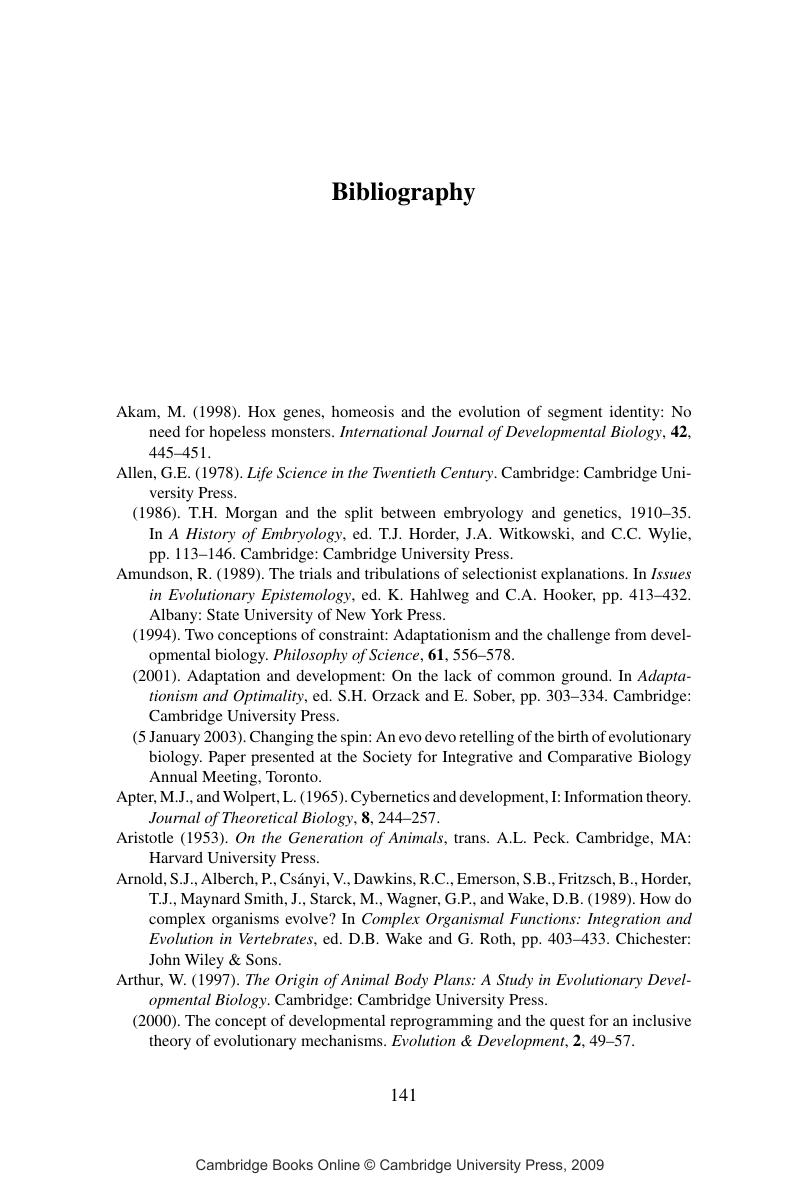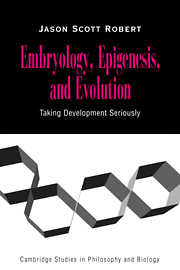Bibliography
Published online by Cambridge University Press: 10 July 2009
Summary

- Type
- Chapter
- Information
- Embryology, Epigenesis and EvolutionTaking Development Seriously, pp. 141 - 156Publisher: Cambridge University PressPrint publication year: 2004

